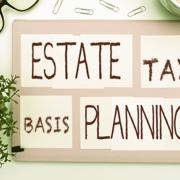The advantages of a living trust for your estate plan
Do you believe you don’t need to worry about estate planning because of the current federal estate tax exemption ($13.99 million per individual or $27.98 million for married couples in 2025)? Well, think again. Even with this substantial exemption, creating a living trust can offer significant benefits, especially if your goal is to avoid probate and maintain privacy.
Here are some answers to questions you may have about this estate planning tool.
What’s a living trust?
A living trust — also known as a revocable trust, grantor trust or family trust — is a legal entity that holds ownership of your assets during your lifetime and distributes them according to your instructions after your death. Unlike a will, a living trust allows your estate to bypass probate, which is the often lengthy and public court process of settling an estate.
How does a living trust work?
You begin by creating a trust document and transferring ownership of specific assets to the trust. These may include:
- Your primary residence,
- Vacation properties, and
- Valuable personal items like antiques.
You’ll name a trustee to manage and distribute the assets after your death. You can serve as the trustee while you’re alive and legally competent. After that, you may appoint a successor trustee — such as a trusted family member, friend, attorney, CPA or financial institution.
Because a living trust is revocable, you can amend or cancel it at any time during your lifetime.
What are the tax implications?
For federal income tax purposes, the IRS doesn’t treat the living trust as separate from you while you’re alive. You’ll continue to report all income and deductions from the trust’s assets on your personal tax return.
However, under state law, the trust is recognized as a separate entity. When structured properly, this allows your estate to bypass probate, helping to ensure a more private and efficient distribution of your assets.
Upon your death, assets in the trust are generally included in your estate for federal estate tax purposes. However, any assets passed to a surviving spouse who’s a U.S. citizen qualify for the unlimited marital deduction, which exempts them from estate tax.
It’s also important to note that the current high federal estate tax exemption is set to expire at the end of 2025, unless Congress extends it. Under “The One, Big, Beautiful Bill,” which recently passed the U.S. House of Representatives, the federal gift and estate tax exemption would be increased to $15 million per individual in 2026. This amount would be permanent but annually adjusted for inflation. The bill is now being considered by the Senate. Keep in mind that the pending legislation could change.
Are there any common pitfalls to avoid?
While a living trust is a powerful tool, it’s only effective when properly executed. Here are some common mistakes to avoid:
- Outdated beneficiary designations. The beneficiaries named on retirement accounts, life insurance policies and brokerage accounts override your trust. Make sure your designations align with your overall estate plan.
- Jointly owned property. Real estate held as “joint tenants with right of survivorship” automatically passes to the surviving co-owner, regardless of what your trust says.
- Failing to transfer assets. Simply creating a trust isn’t enough. You must formally transfer ownership of assets to the trust. Failing to do so means those assets may still be subject to probate.
When is more planning needed?
Although a living trust helps avoid probate, it doesn’t reduce estate or inheritance taxes. If your assets exceed the current exemption or if state estate taxes apply, additional strategies (such as irrevocable trusts, charitable giving or gifting) may be necessary.
Not a one-size-fits-all solution
A living trust is an estate planning tool that can simplify the transfer of your assets, protect your privacy and avoid probate. However, it’s not a one-size-fits-all solution. To make the most of your estate plan and stay ahead of changing tax laws, consult with us or an estate planning attorney.
© 2025












